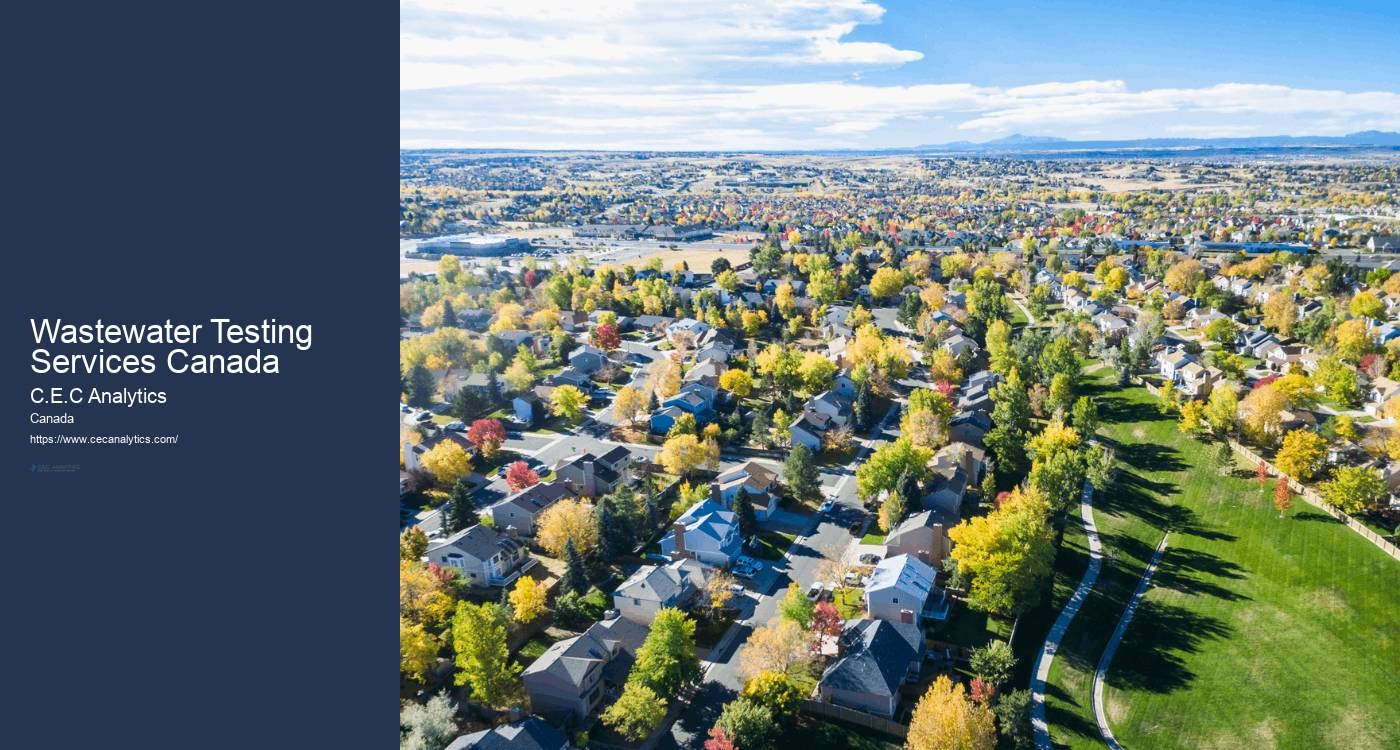

Analytics integrates expertise from various fields to enhance its 'One Health Through Water' initiative, ensuring a comprehensive approach to environmental monitoring. Sewage and septic system water impact testing Environmental water analysis With real-time monitoring, you're not just keeping pace; you're staying ahead, ensuring water safety and quality with unparalleled precision. Well, this pioneering methodology isn't just about detecting the usual suspects; it's a comprehensive approach that offers real-time data analysis, key benefits including reduced environmental impact, and a novel way of collaborating with public health authorities.
C. With the power of IoT technology, you're not just getting data; you're getting actionable insights that can guide your decisions on water management and treatment processes. Analytics stands out because it's not just any water testing service; it's a comprehensive approach to understanding and improving water quality. You'll see a shift toward real-time data gathering and analysis, making it quicker for authorities to respond to public health threats. C.
It's not just about the number of samples but where they're collected from. C. It's crucial for you to understand the value of water and how every action affects our waterways. E.
We're planning to launch new educational programs and workshops that'll help citizens understand the importance of water conservation and what they can do to help. Traditional methods often require manual collection and transport of samples to a lab, which can take days or even weeks for results. It's a call to action, urging you to consider the chemicals you might be washing down your drain or how your community manages its waste.'One Health Through Water' isn't just about identifying problems; it's about fostering a deep understanding of ecosystems and encouraging practical solutions. C.
Companies like C. We're not just talking about recycling or reducing waste; it's about integrating sustainable practices into the core of our business model. Your work doesn't just stop at identifying these problems; you're actively involved in creating solutions that ensure access to clean and safe water, a fundamental human right that's still out of reach for many.
E. These aren't your run-of-the-mill analytics. Moreover, the inclusion of citizen science contributions is democratizing the field, allowing anyone with interest and access to these technologies to play a part in monitoring and protecting water quality. You'll find that your efforts in water quality assessment benefit from the latest in biotechnology, thanks to the collaboration with biologists.
Beyond enhancing our understanding of ecosystems, C. You might wonder how analyzing wastewater can be environmentally friendly. This revolutionary approach means you can quickly take action to safeguard your health and that of your family or community.
E. Certified laboratory water analysis C. IoT sensors, the backbone of C.
Imagine your city's wastewater holding the key to preemptively tackling health emergencies.


By analyzing trends and patterns, C. Analytics, consider the implications for future water stewardship and the role you could play in this evolving narrative. What sets them apart?
C. E. Analytics apart is its use of machine learning algorithms. C.
E. This means you get results faster than traditional methods, allowing for immediate action. By forming strong partnerships, they're able to tailor their services to meet the unique needs of each community, ensuring that your water is safe and clean.
This method surpasses traditional testing by offering a comprehensive snapshot of microbial communities, ensuring you're aware of potential health risks before they become a problem.


You've got to appreciate the broader picture, too.
Analytics empowers you to unlock the full potential of water data, transforming complex information into clear, actionable insights. You're not merely reacting to problems; you're staying a step ahead, ensuring water safety and sustainability with unmatched precision. It's not just about collecting data; it's about understanding it in the moment, enabling you to respond with agility and precision. What does this mean for you?
It's also about prediction and prevention. Analytics, they could detect contaminants in real-time, leading to a 60% reduction in pollutants within the first six months. Analytics leverages high-performance liquid chromatography (HPLC) to scrutinize chemical pollutants at molecular levels.
C. This proactive approach means you're not just reacting to issues as they arise; you're ahead of the curve, safeguarding resources for generations to come. You're not just getting top-notch analysis services; you're becoming part of a movement towards a more sustainable planet. Read more about Wastewater Testing Services Canada here
Whether you need real-time alerts for sudden water quality changes or prefer comprehensive monthly summaries, we've got you covered. The interface is straightforward, allowing you to monitor your water systems with ease. Explore Wastewater Testing Services Canada here With C.

Sampling may refer to:
Specific types of sampling include:
| Part of a series on |
| Pollution |
|---|

|
Wastewater (or waste water) is water generated after the use of freshwater, raw water, drinking water or saline water in a variety of deliberate applications or processes.[1]: 1 Another definition of wastewater is "Used water from any combination of domestic, industrial, commercial or agricultural activities, surface runoff / storm water, and any sewer inflow or sewer infiltration".[2]: 175 In everyday usage, wastewater is commonly a synonym for sewage (also called domestic wastewater or municipal wastewater), which is wastewater that is produced by a community of people.
As a generic term, wastewater may also describe water containing contaminants accumulated in other settings, such as:
You'll find C.E.C. Analytics' solutions are effective in both rural and urban settings, though their impact may vary due to infrastructure differences. It's all about adapting techniques to meet the area's specific needs.
Yes, there are collaborative efforts. They've partnered with universities to nurture new talent in environmental monitoring, offering internships and research opportunities to students passionate about sustainability and water quality. It's a hands-on learning experience for all involved.
You'll find that remote areas pose unique challenges for water monitoring, including limited access, harsh weather, and scarce resources. These factors make it tough to gather consistent and reliable data for effective environmental analysis.